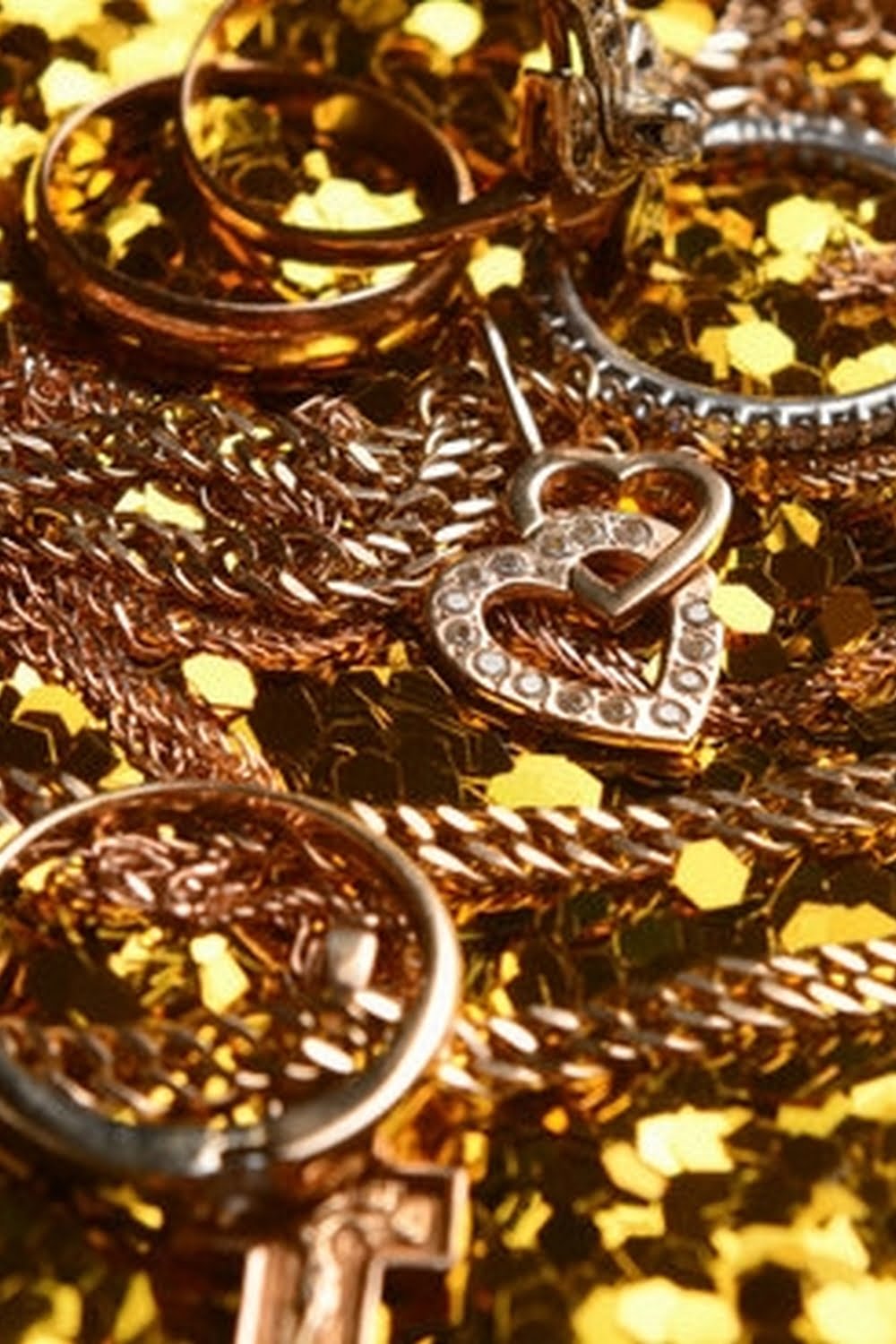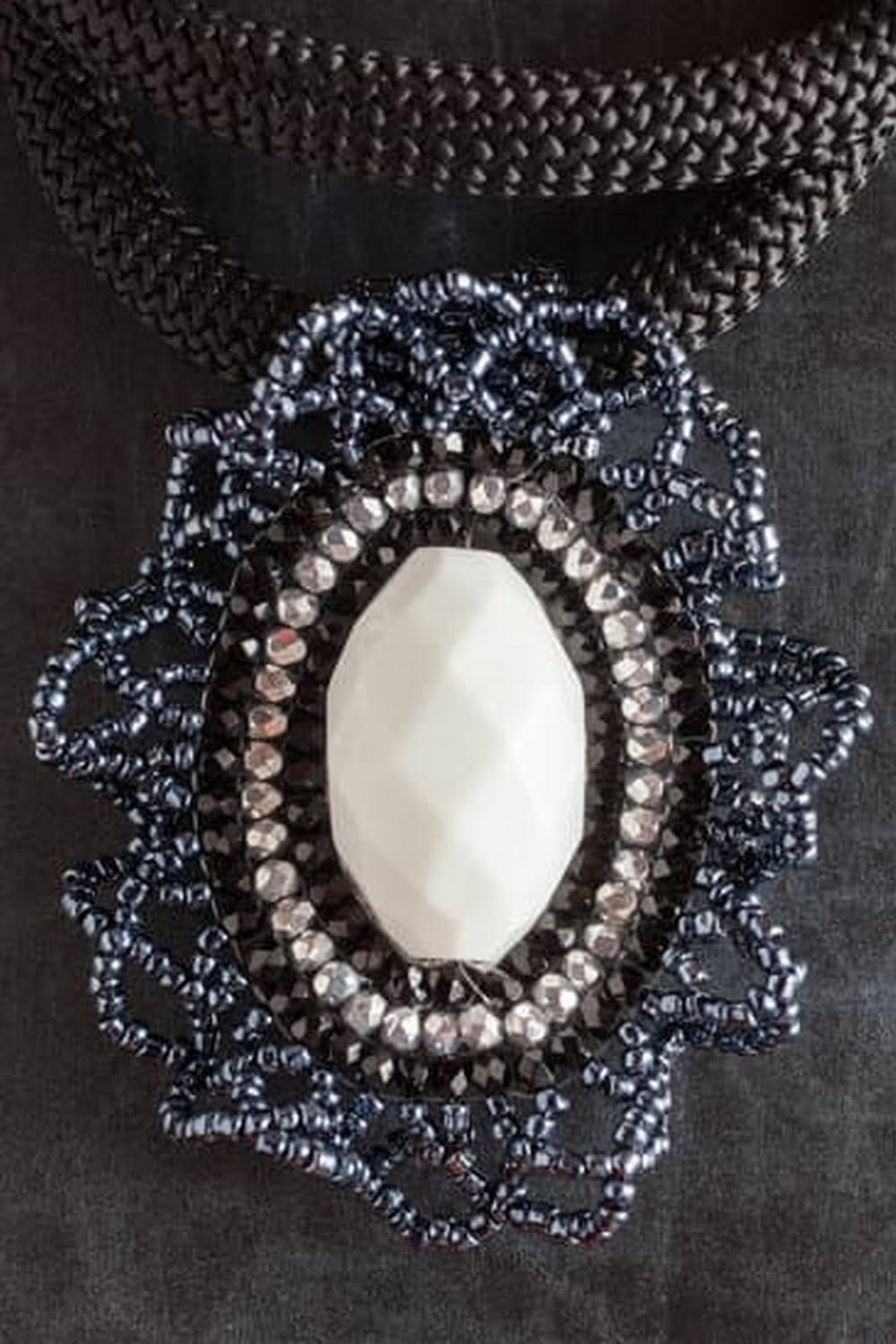Are you curious about where to learn fine jewelry making? The art of crafting fine jewelry is a centuries-old tradition that requires a combination of skill, technique, and creativity. Whether you are an aspiring jewelry maker or simply interested in the craft, this article will guide you through the world of fine jewelry making and provide valuable insights on how and where to learn this intricate art form.
Fine jewelry making encompasses a wide range of techniques and materials, from traditional metalworking to modern approaches using technology. Understanding the history and art behind fine jewelry crafting is essential for anyone looking to delve into this field. Additionally, acquiring the necessary skills and being familiar with different techniques is crucial for creating high-quality pieces.
In this section, we will discuss the history and art of fine jewelry crafting, as well as the skills and techniques required for mastering this craft. We will also explore the various materials used in fine jewelry making and compare traditional methods with modern approaches.
Whether you’re passionate about creating your own pieces or simply want to appreciate the artistry behind it, understanding these fundamental aspects will lay the groundwork for your journey into the world of fine jewelry making.
The History and Art of Fine Jewelry Crafting
The history of fine jewelry crafting dates back centuries, with rich traditions and techniques passed down through generations. The art of fine jewelry making is a meticulous process that requires precision, creativity, and attention to detail. Throughout history, different cultures have developed their own unique styles and methods, creating a diverse and vibrant tapestry of jewelry making traditions.
One of the earliest civilizations known for their fine jewelry crafting is ancient Egypt. Egyptians were skilled artisans who used gold, precious gemstones, and intricate designs to create stunning pieces of jewelry that were often worn by royalty and the elite. In ancient Greece, jewelry was not only a symbol of wealth and status but also held religious significance, with intricate patterns inspired by mythology and nature.
Throughout the Middle Ages in Europe, skilled craftsmen guilds began to emerge, specializing in the creation of fine jewelry for nobility and clergy. The Renaissance period saw a resurgence of interest in the arts, leading to breathtaking advancements in jewelry design and craftsmanship. With each passing era, the art of fine jewelry crafting continued to evolve, incorporating new techniques and styles influenced by changing cultural norms and technological advancements.
Today, fine jewelry crafting continues to be both an art form and a practical skillset. Jewelry makers draw inspiration from historical designs while also infusing their creations with contemporary flair. From handcrafted artisan pieces to high-end luxury brands, the tradition of fine jewelry making remains as captivating as ever. Whether you are interested in learning about ancient techniques or modern innovations, there are countless opportunities available for those seeking to immerse themselves in the world of fine jewelry crafting.
Skills and Techniques Required for Fine Jewelry Making
The skills and techniques required for fine jewelry making are crucial for creating stunning, high-quality pieces. Whether you’re interested in pursuing jewelry making as a hobby or a profession, there are certain abilities and knowledge that are essential for success in this craft.
First and foremost, fine jewelry making requires a strong foundation in basic craftsmanship skills such as soldering, stone setting, filing, polishing, and metalworking. These skills are the building blocks of jewelry making and are necessary for creating intricate and delicate pieces. Additionally, an understanding of design principles, such as balance, symmetry, and color theory, is also important for creating visually appealing and marketable jewelry.
In addition to traditional craftsmanship skills and design principles, a comprehensive knowledge of different materials used in jewelry making is crucial. Fine jewelers need to be familiar with a wide range of precious metals (such as gold, silver, platinum) and gemstones (including diamonds, rubies, sapphires) in order to make informed decisions about which materials to use for specific designs. Understanding the properties and characteristics of these materials can help jewelers create durable and visually stunning pieces.
Finally< it's important for fine jewelry makers to stay current with industry trends and advancements in techniques. This entails staying abreast with modern technology such as 3D printing and CAD software which have revolutionized the way some fine jewelers work.
| Skills Required | Techniques Required |
|---|---|
| Soldering | Metalworking |
| Stone setting | Filing |
| Design principles (balance,symmetry,color theory) | Precious metals knowledge (gold,silver.platinum) |
Choosing the Right Materials for Fine Jewelry Making
When it comes to fine jewelry making, choosing the right materials is crucial in creating stunning and high-quality pieces. The materials used can greatly affect the overall look, durability, and value of the jewelry. Precious metals such as gold, silver, and platinum are commonly used in fine jewelry making due to their beauty and ability to retain value over time. Gemstones, both precious and semi-precious, also play a significant role in adding color and brilliance to the pieces.
In addition to precious metals and gemstones, other materials like pearls, diamonds, and even wood or enamel may be incorporated into fine jewelry designs. Each material has its own unique characteristics and requires specific techniques for handling and setting. For example, working with pearls requires delicate care to avoid damage, while setting diamonds demands precision and expertise.
Considering the significant investment involved in acquiring these materials for fine jewelry making, it’s important for aspiring jewelers to learn about sourcing and evaluating them. Understanding factors such as quality, authenticity, and ethical considerations in obtaining materials is essential in creating responsibly crafted jewelry.
Furthermore, learning about different metalworking techniques, stone setting methods, and material manipulation processes is essential for any aspiring fine jewelry maker. This knowledge can be acquired through specialized education programs that focus on teaching these skills. While traditional apprenticeships with experienced jewelers were once the primary way to learn the craft, modern approaches now include formal education at jewelry schools or workshops as well as online resources where do you learn fine jewelry making.
| Material | Characteristics |
|---|---|
| Precious Metals (Gold, Silver, Platinum) | Beauty & Value Retention |
| Gemstones (Diamonds, Rubies) | Color & Brilliance |
| Pearls | Delicate Care Needed |
Traditional vs Modern Approaches to Learning Fine Jewelry Making
When it comes to learning fine jewelry making, aspiring artisans have the option to embrace traditional or modern approaches to honing their craft. Each approach offers unique benefits and challenges that cater to different learning styles and preferences. Traditional approaches typically involve hands-on training with experienced artisans in a workshop or apprenticeship setting, while modern approaches encompass online courses, educational resources, and digital tutorials.
In the traditional approach to learning fine jewelry making, individuals have the opportunity to work closely with seasoned professionals who pass down their knowledge and expertise through direct mentorship. This hands-on method allows students to observe, practice, and refine their skills under the guidance of a master jeweler. Additionally, traditional programs often emphasize the importance of mastering time-honored techniques and craftsmanship that have been perfected over generations.
On the other hand, modern approaches to learning fine jewelry making offer flexibility and accessibility for individuals who may not have access to traditional apprenticeships or workshops. Online courses and educational resources provide aspiring artisans with the opportunity to learn at their own pace from anywhere in the world. These digital platforms often feature comprehensive instructional materials, demonstrations, and support from professional jewelers who share their insights and techniques through virtual channels.
Regardless of whether you choose a traditional or modern approach to learning fine jewelry making, it is essential to consider your individual learning style, goals, and resources before embarking on your educational journey. Whether you seek hands-on training from a seasoned artisan or prefer the convenience of online resources, there are numerous options available for aspiring jewelry makers to cultivate their skills and creativity.
Where do you learn fine jewelry making? Finding the right balance between tradition and innovation can be a key factor in shaping your educational experience as you pursue excellence in this timeless art form.
The Best Places to Learn Fine Jewelry Making
When it comes to learning the art of fine jewelry making, there are a variety of options available. One of the most traditional approaches is enrolling in a specialized school or workshop that focuses specifically on jewelry crafting. These institutions offer structured programs that provide hands-on training and guidance from experienced professionals in the field.
Many renowned jewelry schools around the world offer comprehensive courses in fine jewelry making, covering everything from basic techniques to advanced skills. These programs often include modules on gemology, metalworking, stone setting, and design principles. In addition to formal education, students also have the opportunity to learn about the history of jewelry and gain an understanding of different styles and trends.
Furthermore, workshops led by master jewelers provide a unique learning experience for individuals interested in honing their craft. These short-term intensive courses allow participants to immerse themselves in the world of fine jewelry making under the guidance of experts. Workshops often focus on specific skills or styles, offering a more specialized approach to learning.
Moreover, many schools and workshops also provide access to state-of-the-art equipment and resources that may not be readily available elsewhere. This ensures that students receive comprehensive training using industry-standard tools and materials.
As a result, aspiring jewelry makers can gain valuable hands-on experience while familiarizing themselves with the professional environment in which they may work someday. So when it comes to where do you learn fine jewelry making, schools and workshops are definitely top choices for those seeking a solid foundation in this intricate and beautiful craft.
Online Resources for Fine Jewelry Making Education
When it comes to learning the art of fine jewelry making, there are a plethora of online resources available to help you master this craft. Whether you are a beginner looking to dip your toes into the world of jewelry making or an experienced artisan wanting to refine your skills, online resources offer a convenient way to learn at your own pace and in the comfort of your own space.
YouTube Tutorials
One of the most accessible and cost-effective ways to learn fine jewelry making is through YouTube tutorials. Many skilled artisans and professionals in the industry share their expertise through detailed video tutorials on various techniques, designs, and tips for creating fine jewelry. From basic wire wrapping to advanced stone setting, you can find a wide range of tutorials catering to different skill levels.
Online Courses and Webinars
For those seeking more structured and comprehensive learning, there are numerous online courses and webinars dedicated to fine jewelry making. These courses often provide in-depth instruction on specific aspects such as metalwork, gemstone cutting, and even business management for jewelry makers. Some platforms even offer live webinars where participants can interact with instructors in real-time, providing a more engaging learning experience.
Social Media Platforms and Forums
In addition to formal online courses, social media platforms and forums are excellent resources for connecting with fellow jewelry enthusiasts and professionals. Platforms like Instagram and Facebook host communities of jewelers who share their work, offer advice, and discuss trends in the industry. Joining these communities can provide valuable networking opportunities and exposure to diverse perspectives on fine jewelry making.
With the abundance of online resources available today, aspiring jewelers have endless options for learning the intricacies of fine jewelry crafting. Whether you prefer visual demonstrations through videos, structured courses with guided instruction, or connecting with like-minded individuals through social media platforms, there is something out there for everyone seeking to embark on a journey into the world of fine jewelry making.
Tips for Choosing the Right Fine Jewelry Making Program
When it comes to choosing the right fine jewelry making program, there are several factors to consider in order to ensure you receive the best education and training for your desired career path. Here are some tips to help you make the right decision:
Evaluate Your Goals and Interests
Before selecting a fine jewelry making program, take some time to evaluate your personal goals and interests within the industry. Consider what specific skills or techniques you want to learn, whether it’s traditional metalworking, stone setting, or modern CAD design. This will help you narrow down your options and find a program that aligns with your aspirations.
Research Accredited Programs
It’s important to choose a fine jewelry making program that is accredited and recognized within the industry. Look for programs that have a strong reputation and experienced instructors who can provide high-quality education and training. Researching reviews and alumni experiences can also give you valuable insight into the quality of the program.
Consider Practical Experience
A good fine jewelry making program will provide hands-on experience in addition to classroom learning. Look for programs that offer opportunities for internships, workshops, or apprenticeships where you can gain practical experience working with professional jewelers. Practical experience is essential for honing your skills and building a portfolio.
By following these tips, you can confidently select the right fine jewelry making program that will provide you with the knowledge, skills, and experience needed to embark on a successful career in the industry. Considering your goals, researching accredited programs, and seeking practical experience are crucial steps in finding the perfect educational journey tailored to your needs – this may just be exactly what students need when they ask themselves “where do you learn fine jewelry making?”.
Conclusion
As you embark on your journey to learn fine jewelry making, it’s important to consider the rich history and artistry that goes into this craft. From ancient civilizations to modern techniques, the skills and techniques required for fine jewelry making have evolved over time. Whether you are drawn to traditional methods or prefer a more modern approach, there are a variety of resources available for learning the craft.
When it comes to choosing the right materials for fine jewelry making, it’s essential to understand the unique properties of different metals, gemstones, and other components. By selecting high-quality materials, you can ensure that your creations are not only beautiful but also durable and long-lasting.
While traditional in-person classes and workshops provide valuable hands-on experience, online resources are also an excellent option for learning fine jewelry making. With access to virtual tutorials, workshops, and courses, aspiring jewelers can hone their skills from the comfort of their own homes. No matter where you choose to learn fine jewelry making, remember that dedication and practice are key to mastering this intricate art form.
Frequently Asked Questions
How Do I Start Learning Jewelry-Making?
To start learning jewelry-making, you can begin by researching basic techniques and materials online or in books. Consider taking a beginners’ class at a local craft store or community center to learn hands-on skills like wire wrapping, beadwork, or metalwork. Practice these techniques and experiment with different designs to develop your own style.
How Do I Become a Fine Jewelry Maker?
Becoming a fine jewelry maker typically involves gaining a deep understanding of precious metals and gemstones, as well as advanced techniques such as soldering, stone setting, and metal casting. You may want to pursue formal training in jewelry-making at a specialized trade school or university program that offers coursework in metalsmithing and gemology.
Gain experience through apprenticeships or internships with established jewelers to hone your skills and learn the business side of the industry.
What Education Do You Need to Make Jewelry?
There are various educational paths you can take to make jewelry, depending on your career goals. For hobbyists or those interested in basic jewelry-making, workshops, online tutorials, and community college classes may provide adequate training.
However, for aspiring professional jewelers seeking comprehensive knowledge in design and craftsmanship, pursuing a degree in fine arts or jewelry design from an accredited institution can be beneficial. Many programs offer courses covering technical skills, art history, business management, and CAD (computer-aided design) software for creating jewelry prototypes.

Welcome to my jewelry blog! My name is Sarah and I am the owner of this blog.
I love making jewelry and sharing my creations with others.
So whether you’re someone who loves wearing jewelry yourself or simply enjoys learning about it, be sure to check out my blog for insightful posts on everything related to this exciting topic!





